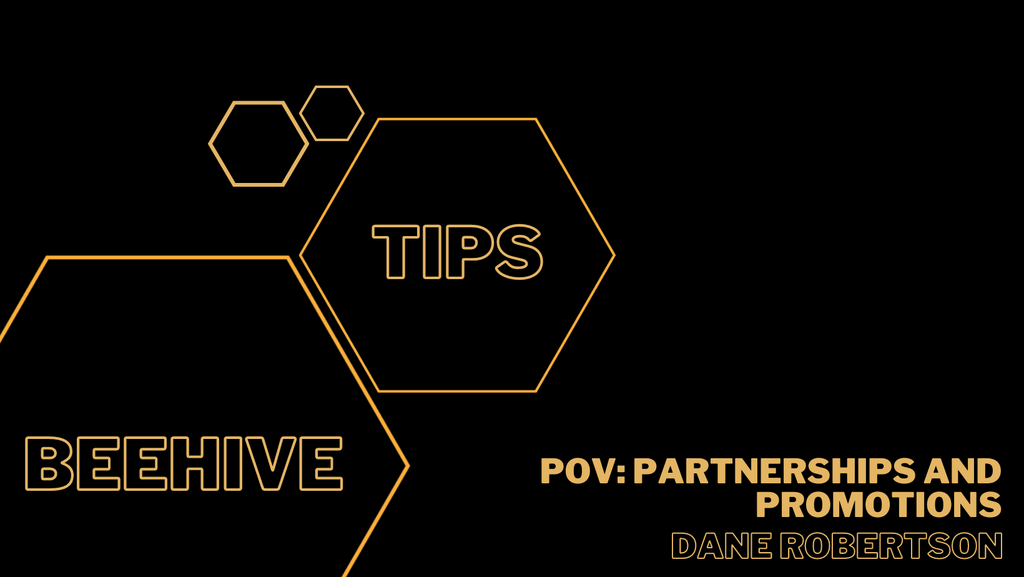As part of our Beehive Tips series, we’re digging deeper into how artists, music publicists and creatives in general can work with each other successfully. We’re all parts of the same machine at the end of the day!
For this edition of the series, we look at how booking promotional campaigns and partnerships work in music media. To break it down some more, The Brag’s Senior Account Manager Dane Robertson walks us through some do’s and don’ts.
For artists looking to engage, music publicists wanting to know more, Dane’s got us covered!
When it comes to engaging in promotions or brand partnerships, what is generally the first thing you’re looking for in a potential new client?
I’m looking for compatibility with our network because this allows us to tell the most authentic and engaging stories, which will ultimately generate the best results for all involved.
What can be something an artist/client does (or doesn’t do) that can have the ability to tank a placement campaign? How can they avoid this from the jump?
Sometimes people are hesitant to chat on the phone but I think a kick-off phone call is an essential way to start every campaign. Sometimes things get misinterpreted via email but a phone conversation, followed by an email documenting what was discussed, removes any ambiguity.
It’s very important to ensure everyone’s clear on the expectations prior to the campaign launch to avoid disappointment post campaign.
If an artist or potential creative client/brand is looking to approach you with a pitch, what would you say is the best way to not just turn your head, but keep your interest beyond their initial pitch email?
Try to capture my imagination by offering a glimpse into the proposed campaign. This might be through a brief synopsis, an analogy or links to previous work. This will pique my interest and encourage me to seek out more information, leading to a face-to-face meeting.
Meetings are a great way to build rapport and trust, creating a healthy working relationship that’ll help get you noticed in the future.
For artists who might still be learning about the benefits of a partnership or promotional campaign, how would you best break an activation down – particularly for online placement?
An online partnership is a great way for artists to benefit from an existing, well established brand. For example, artists can tap into an existing brand’s audience to drive mass reach quickly. In most cases, this audience is going to be much bigger than the audience artists can reach on their own channels.
It’s also beneficial for artists because they can establish their personal brand by leveraging the credentials of the website they align with. This effectively drives brand association amongst the target audience. For example, if an artist wants to be considered a cool, cultural icon amongst music enthusiasts then Rolling Stone is a great space to appear in.
Is there a campaign you can think of recently that’s stuck out as a particular joy to work (and why)?
It’s not one I worked on but The Brag’s partnership with Green Beacon Brewery is one that sticks out for me.
Green Beacon wanted to drive awareness and consideration for their alcohol delivery service during last year’s lockdown.
The Brag came up with a video series called In My Room, where musicians performed a live virtual gig from their homes. The videos included product integration, driving awareness and consideration for Green Beacon’s delivery service so fans could enjoy a beer, while listening to live music in lockdown.
I love this campaign because it works on so many levels. It fulfills the client’s objectives, it’s relevant, it offers audiences value and it combines two things that go hand in hand: beer and music. This establishes a fun, unique and authentic campaign that drives brand love.
The series was such a successful concept that it was picked up by Rolling Stone USA and has featured huge stars like Ellie Goulding, HAIM and Sting.
How long have you been working in this field for, and what’s drawn you to it?
I’ve been working in advertising sales for five years. I fell into my first role with Val Morgan Cinema (VMC) because I loved movies and needed a job. To be honest, I didn’t know what the role entailed but I had recently completed a Bachelor of Media and wanted to start my career so I went for it.
I worked with VMC for four years and decided to move into digital sales because there’s a lot more opportunity to be creative. You can collaborate with editorial, partnerships and sales teams to create custom campaigns that audiences genuinely enjoy. Most people don’t like ads so the thought of creating a campaign that actually brings value to people’s lives is what appeals most to me.
How do you think we’re going to see the relationship between creatives and online partnerships deepen as a result of the pandemic (ie. touring, other avenues of promotion not being available currently)?
We’ve all gone through a hugely traumatic experience, which has affected every facet of our lives. We’re all bound by this shared experience so I think we’ll subsequently be more understanding and sympathetic when working together. There will be more flexibility: more give and less take, resulting in better collaboration and thus, better work.
The past 18 months have also forced us to be more creative in the ways we engage with fans: virtual gigs, cross-medium partnerships and VR festivals. These innovations will be applied differently once things return to normal, creating more unique and daring campaigns.

